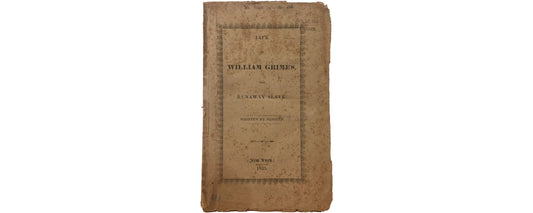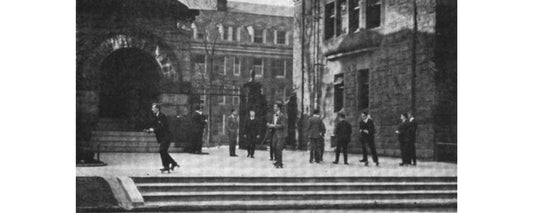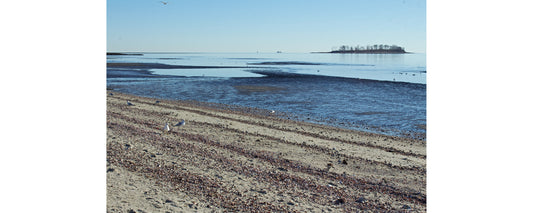“It’s all about the journey,” says Allan Dias, the self-described “customer that never left” Tony’s Bikes & Sports in Milford, where he’ll replace a broken chain or steer a biking enthusiast toward challenging trails. His short bio on the shop’s website says, “Fun fact: ran 65 miles on his 65th birthday.”
Dias did indeed run 65 miles on his 65th birthday, starting in lower Manhattan and crossing into Connecticut to his hometown, Stratford. And just two months ago, at age 71, he completed the Baystate Marathon in Lowell, MA, where his time of 3:54:50 qualified him for the 2024 Boston Marathon.
But the fun facts don’t stop there. In the late ’80s and early ’90s, Dias was the bass player for Public Image Ltd (PiL), a post-punk band fronted by John Lydon, a.k.a. Johnny Rotten. The band toured the world, performing for hundreds of thousands of people and making a mark on British music history.
sponsored by
“It’s all about the journey,” Dias says again, then begins to describe his in more detail. He bought his first guitar, an acoustic, while a student at Stratford High School and taught himself to play a bit before heading to college (Villanova followed by City College of New York) to study engineering. When a college roommate who was in a band said, “Too bad you don’t play bass,” Dias didn’t flinch. The roommate gave him a bass and 10 songs to learn, and he performed with the band the next week. Later, back home on a holiday break, he appeared with friends on a local stage, and a two-note riff was all it took to seal his destiny. “I got a groove going. It was nothing special, but I began to realize the magic of it. That I could create a feeling with just two notes. I could make people move.”
Thus he joined the New York music scene, but something was missing. “If you’re walking in New York City with a double bass, you’re a jazz guy, so you can’t play funk ’cuz you’re a jazz guy. But I do. If you’re a black musician, you don’t play rock, but I do.” He became disillusioned. So he sold his stuff and traveled, eventually landing in London around 1980 with some money and a bag of clothes but no instrument. “London was jumping,” he says. “Eventually I got a bass and started jamming and going to auditions and stuff, and I was loving it because they were just accepting me for what I brought to the table and not what I looked like or who I was. It was really exciting.” Before long, he was tapped to play in David Lloyd’s band Uropa Lula (later Viva Lula) and released four singles on Arista Records.
Dias was 35 in 1986 when he got a call about joining PiL and met up with Lydon (Johnny Rotten) at a pub to talk it over. “We got along like a house on fire,” he recalls. “John was a product of a time when British kids came out of school with no future, nothing to look forward to. So they destroyed the music as it was, and they just kicked the doors down.” Lydon was younger than Dias, but Dias came up in the late ’60s in America, when “it was a cultural revolution, a social revolution and intellectual revolution, kids standing up for themselves… so we could relate on a lot of subjects. I could hang with this guy.”
He didn’t play a note for the music icon that day but got the job. He performed with PiL from 1986 to 1992, playing on three original albums—Happy?, 9, and That What is Not—as well as a greatest hits compilation including one new song, “Don’t Ask Me,” that Dias wrote with some final editing by Lydon. (He says he’s one of the few if not the only person to write lyrics for Lydon.) But it was a demanding, high-pressure life. “You’re always simmering,”on tour and off. “Even if it’s a Tuesday night in Cleveland, raining, I have to come out there,
He bailed, returning home to Stratford around 1992, and entered rehab for 30 days to get his life on a different track. One day he walked into Tony’s and bought a bike. Soon he started hanging out at the shop, swapping repairs for parts as he worked various jobs, and then, in his 40s, joined guys 15 years his junior racing mountain bikes, where he found parallels to his previous life. “When I got to the start line, that’s the performance, so the training and all that was the rehearsal,” he says, even though, as a racer, he was a band of one. “It’s more selfish, it’s hitting a more personal note,” he says of racing.
When he reached his biking goals, he turned to long-distance running, something he’d done in high school when a coach told him he was too small to play football. He ran the New York City Marathon in 2014 at age 63 and the big birthday run two years later. He says the 6 a.m.-to-9 p.m., 65-mile run was “easy,” stretching the word out like a slide note on a bass guitar.
He still plays bass, mostly at home, and he’s picked up the tuba. It’s connected—the music, the biking and the running, he says. “It’s all a performance. The journey, the work involved, trying this note, that note, it’s a beautiful thing, and that’s where growth comes from.”
Written by Jill Dion.








